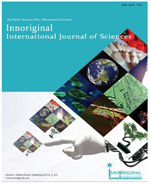EVALUATION AND COMPARE THE EFFICACY OF KAISHORA GUGGULU PLUS AMRITA GUGGULU IN THE MANAGEMENT OF UTTHANA VATARAKTA W.S.R. TO GOUT
Abstract
Evaluate the synergistic effect of Kaishora guggulu plus Amrita guggulu and compare with placebo group in patients suffering from Vatarakta or Gout. MethodsThe patients, who attended the OPD and IPD of the Govt Ayurvedic College with signs and symptoms of Vatarakta, were screened. Among these, 90 patients who fulfilled the criteria of inclusion, mentioned a little later in the text, were included in the study. The selected patients were randomly categorized into two groups, with each group consisting of 45 patients. The study was a single-blind, comparative, clinical study with a pre-test and post-test design. Where in a minimum of 90 patients of either sex, suffering from Vatarakta, in an age limit of 25 to 80 years, were selected and randomly categorized into two groups. The 45 patients of group A were treated with oral administration of Tab Kaishora guggulu 2 gm plus Amrita guggulu 2 gm thrice a day and the group B patients with Tab PLACEBO in 2gm of the dose pattern with anupana of lukewarm water.Results The therapeutic effect of the treatment was assessed in both the groups based on specific subjective and objective parameters on grading scales. The results obtained were analyzed statistically in both the groups and the comparative effect was assessed using the unpaired “t†-test. In the present study, 80% of the patients from both the groups had madhumeha (Diabetes mellitus), shonita mada (Hypertension) or both. 70 percent of the patients in group A and nearly 60% of the patients in group B, suffering from Vatarakta, had the habit of smoking. In group A statistically significant improvement was observed in all the criteria of assessment. The outcome of the study revealed therapeutic efficacy of Kaishora guggulu plus Amrita guggulu in Vatarakta. The use of Kaishora guggulu plus Amrita guggulu as shamana Aushadhas was a perfect selection in the management of rakta margavaranajanya Vatarakta.Patients of groups A showed marked remission of the symptom of pain after intervention. The results are shown in Tables 2–4. The comparison of effect of therapy is shown in Figures 1–4. In group A, the initial mean score was 2.66, which came down to 1.39 after treatment, exhibiting a statistically, highly significant improvement, with P < 0.001 and about 78.9% relief. At the same time, group B patients also showed no marked improvement, with reduction in the initial mean score of 1.26 to 1.06 after intervention. This was statistically, insignificant, with P < 0.1 and about 23.14% relief. When compared, through the unpaired “t†-test, the difference between the two groups was significant statistically. Burning sensation was one of the cardinal symptoms of Vatarakta, which was relieved by 76% in group A patients and by 15% in group B patients. This improvement, when compared using the unpaired “t†-test, show big difference between the two groups. Seventy-six percent improvements were observed in the symptom of ‘malaise’ in group A patients, while Group B patients showed 23% relief. This improvement after the treatment was found to be highly significant (P < 0.001) in the groups A as per the paired “t†-test. When given for the unpaired “t†-test, this difference was not statistically significant.ConclusionThe outcome of the study reveals the therapeutic efficacy of Kaishora guggulu plus Amrita guggulu in Utthana Vatarakta. The use of Kaishora guggulu plus Amrita guggulu as Shamana Oushad has is a perfect selection for the management of Rakta Margavaranajanya Vatarakta or gout. Keywords: Vatarakta, Margavarana, Raktavahasrotas, Atherosclerosis,Peripheral Vascular Diseases.Downloads
Published
2014-09-01
How to Cite
Gupta, M. K., Gaur, D. S., Singh, V. K., & Urmaliya, N. (2014). EVALUATION AND COMPARE THE EFFICACY OF KAISHORA GUGGULU PLUS AMRITA GUGGULU IN THE MANAGEMENT OF UTTHANA VATARAKTA W.S.R. TO GOUT. Innoriginal: International Journal of Sciences. Retrieved from https://innoriginal.com/index.php/iijs/article/view/9
Issue
Section
RESEARCH ARTICLE


